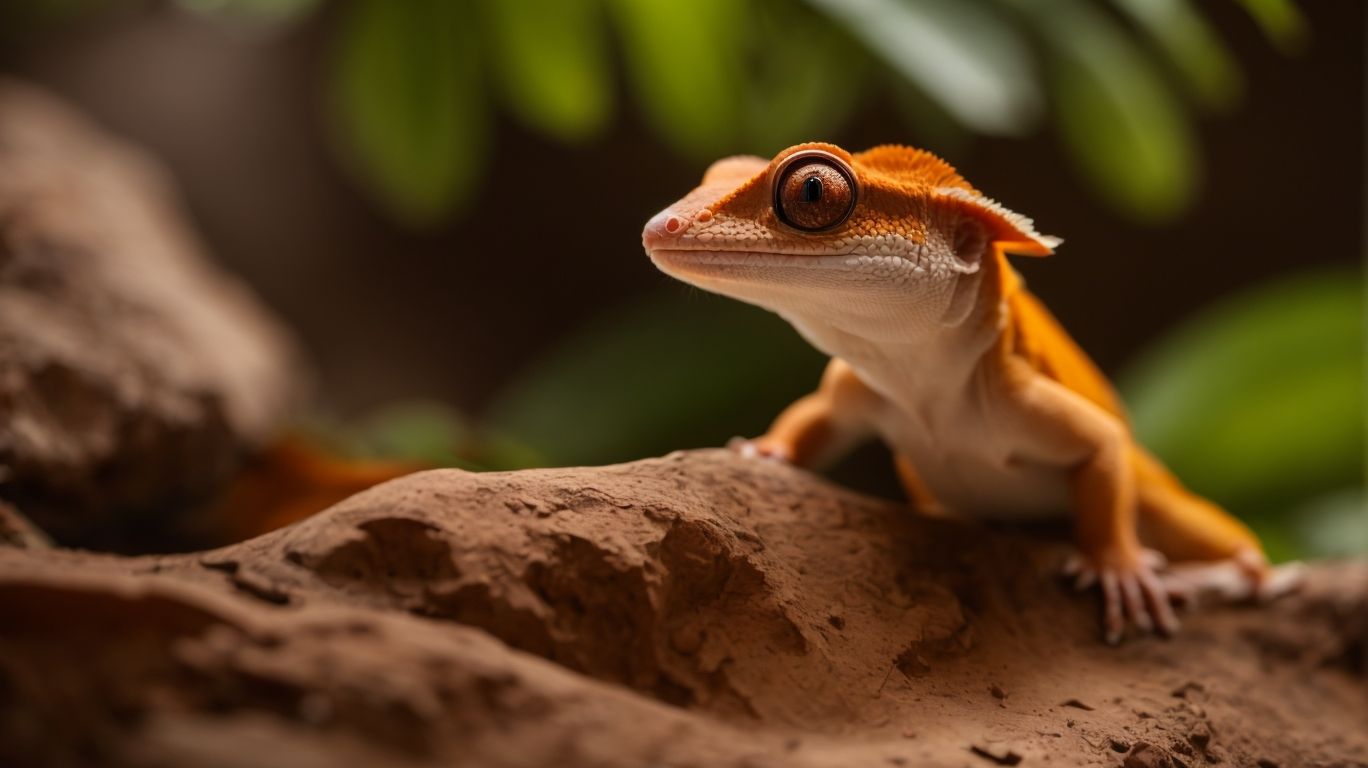
The Lifespan of Red Crested Geckos: Understanding Their Longevity
Red crested geckos are fascinating creatures known for their unique appearance and interesting behaviors. In this article, we will explore the average lifespan of red crested geckos and the factors that can affect their longevity.
We will also discuss how long these geckos can live in captivity and the key factors for ensuring a longer lifespan. We will address common health issues that can impact their longevity, signs of aging, and ways to help aging geckos.
We will delve into the potential for red crested geckos to live longer than the average lifespan and how to ensure a healthy and happy life for these captivating creatures. Whether you’re a seasoned gecko owner or considering bringing one into your home, this article will provide valuable insights into understanding and promoting the longevity of red crested geckos.
What Are Red Crested Geckos?
Red Crested Geckos, also known as Correlophus ciliatus, are a fascinating species of reptiles that are often kept as pets due to their unique characteristics and captivating appearance.
These geckos are native to the tropical rainforests of New Caledonia and nearby islands, where they thrive in lush, humid environments. They are arboreal, meaning they spend most of their time in trees and are equipped with specialized toe pads to help them grip onto surfaces.
Their distinctive red crests atop their heads add to their allure, and they come in a variety of colors and patterns, making them a popular choice for reptile enthusiasts. In addition, their genetic diversity has led to the development of various morphs and colorations, giving owners a wide array of choices for these delightful pets.
What Is the Average Lifespan of Red Crested Geckos?
The average lifespan of Red Crested Geckos ranges between 15 to 20 years, making them a long-lived species within the realm of reptile pets.
The longevity of Red Crested Geckos is influenced by various factors, including genetics, diet, and habitat conditions. Genetic predispositions can affect their overall health and lifespan expectancy.
To promote a longer lifespan, it is essential to provide these geckos with a well-balanced diet, maintain suitable temperatures, and ensure proper humidity levels in their habitat. Regular veterinary check-ups and proper care are also crucial in preventing common health issues such as metabolic bone disease and respiratory infections.
What Factors Affect the Lifespan of Red Crested Geckos?
The lifespan of Red Crested Geckos is influenced by a myriad of factors, including genetic predispositions, environmental conditions, and the overall well-being of the reptiles.
Genetics play a vital role in determining the potential lifespan of Red Crested Geckos. Certain genetic predispositions may impact their ability to thrive and survive.
Habitat quality and environmental enrichment also significantly contribute to their longevity. A well-maintained and enriched habitat can provide opportunities for natural behaviors, mental stimulation, and physical activity.
All of these factors can positively impact the geckos’ overall health and lifespan. By carefully considering these factors, gecko enthusiasts can enhance the well-being of these fascinating creatures and potentially extend their lifespans.
How Long Do Red Crested Geckos Live in Captivity?
Red Crested Geckos can thrive in captivity for an extensive period, often surpassing their average lifespan of 15 to 20 years when provided with optimal care and a suitable captive environment.
Consistent, well-maintained captive environments offer numerous benefits for these incredible creatures. Captive breeding not only helps to protect the species in the wild but also ensures genetic diversity within captive populations.
As pet owners, it’s crucial to prioritize proper nutrition, temperature, and humidity levels to mimic their natural habitat. Providing ample space, hiding spots, and branches for climbing contributes to their physical and mental well-being. Understanding and implementing these best practices can significantly extend the lifespan of Red Crested Geckos under your care.
What Are the Key Factors for a Longer Lifespan in Captivity?
The longevity of Red Crested Geckos in captivity hinges on meticulous husbandry practices, appropriate housing arrangements, and a conducive captive environment that mirrors their natural habitat.
Geckos thrive in a terrarium with ample space for climbing and hiding spots. It is crucial to maintain appropriate temperature and humidity levels for their well-being.
Offering a variety of live insects and supplemented diets ensures that their nutritional needs are met. Environmental enrichment is also vital, such as providing branches, foliage, and suitable substrates for natural behaviors.
Regular monitoring and veterinary care are essential for promoting the overall health and well-being of these captivating creatures in captivity.
What Are the Common Health Issues That Can Affect the Lifespan of Red Crested Geckos?
Red Crested Geckos are susceptible to various common health issues, including metabolic bone disease, respiratory infections, and skin conditions, which can significantly impact their lifespan and overall well-being.
Reptiles have unique physiology, making health concerns particularly challenging. Veterinary care is crucial for early detection and treatment of these ailments. Regular check-ups, proper nutrition, and maintaining the correct habitat conditions are essential preventive measures for the health of Red Crested Geckos.
UVB lighting and proper supplementation are vital for preventing and managing metabolic bone disease. Keeping the habitat clean and well-maintained can also reduce the risk of respiratory infections and skin conditions.
How Can These Health Issues Be Prevented or Treated?
Preventing and treating health issues in Red Crested Geckos necessitates proactive measures such as dietary supplementation, environmental adjustments, and prompt veterinary intervention to ensure their sustained well-being and longevity.
To keep geckos healthy, it’s important for owners to monitor their diet, provide calcium and vitamin D3, and create a suitable habitat with proper humidity and temperature levels. Regular check-ups with a reptile veterinarian and quick action at the first sign of illness are essential for maintaining their overall well-being.
By taking these steps, gecko owners can greatly decrease the likelihood of common health problems and ensure their beloved pets live happy and healthy lives.
What Are the Signs of Aging in Red Crested Geckos?
As Red Crested Geckos age, observable changes in their behavior, activity levels, and feeding patterns may signify the onset of the aging process, reflecting the variability in their lifespans.
As Red Crested Geckos age, they may become less active and spend more time resting or basking under heat lamps.
Weight loss due to a decreased interest in feeding is a common sign of aging in older geckos.
Changes in skin texture and coloration may also occur as geckos age.
Some individuals may exhibit behavioral shifts, such as reduced social interactions or a preference for solitude.
These signs highlight the natural progression of aging in Red Crested Geckos and emphasize the importance of attentive care and monitoring as they mature.
How Can You Help Your Aging Red Crested Gecko?
Supporting the well-being of an aging Red Crested Gecko involves providing enriched environments, tailored dietary considerations, and attentive care to accommodate their evolving needs and ensure their comfort.
As Red Crested Geckos age, it becomes increasingly important to create an environment that stimulates their natural behaviors. This includes activities such as climbing, hiding, and basking. To achieve this, it is recommended to incorporate various levels of branches, rocks, and foliage within their habitat.
Additionally, offering a diverse range of feeder insects is crucial in meeting their specialized dietary requirements. It is important to supplement their diet with essential vitamins and minerals to ensure their overall health and well-being. Regular health check-ups and close observation are also essential in ensuring that their needs are being met and any changes in behavior or health are promptly addressed.
Can Red Crested Geckos Live Longer Than the Average Lifespan?
Certain genetic factors and exceptional care practices have been known to extend the lifespan of Red Crested Geckos beyond the average expectancy, showcasing the potential for prolonged longevity in select individuals.
Genetic factors are key in determining the health and lifespan of Red Crested Geckos. In addition to genetics, providing exceptional care through proper temperature and humidity levels, a nutrient-rich diet, and a stress-free environment can further support their longevity.
Environmental conditions, such as suitable living conditions and the absence of potential hazards, also play a significant role in promoting a longer and healthier life for these geckos.
What Are the Factors That Can Contribute to a Longer Lifespan?
Enhancing the longevity of Red Crested Geckos entails continuous research, meticulous care, and an understanding of their distinct needs, all of which contribute to fostering extended lifespans in these remarkable reptiles.
This ongoing research provides insights into the gecko’s dietary requirements, habitat preferences, and health considerations, enabling keepers to create optimal living conditions.
Meticulous care practices encompass temperature regulation, humidity control, and regular health assessments to ensure the well-being of these captivating creatures. Understanding their behavioral cues, mating rituals, and the impact of environmental changes is paramount for fostering a thriving gecko population and promoting their extended lifespans.
How Can You Ensure a Healthy and Happy Life for Your Red Crested Gecko?
Ensuring a healthy and content life for your Red Crested Gecko revolves around meticulous husbandry, a balanced diet, and an enriched environment that mirrors their natural habitat, all contributing to their overall well-being and happiness.
Red Crested Geckos are ectothermic, meaning they rely on external sources to regulate their body temperature. Therefore, it’s crucial to maintain stable temperature and humidity levels in their enclosure.
Creating a suitable environment for these geckos involves providing appropriate substrates, hiding spots, and climbing structures. These elements enrich their surroundings and promote natural behaviors.
In terms of diet, a variety of insects and fruit should be offered to ensure they receive essential nutrients. Regular health check-ups and monitoring for signs of stress or illness are also essential for their overall well-being.
By addressing these facets, you can create an environment that fosters the well-being and happiness of your Red Crested Gecko.




No Comments